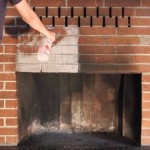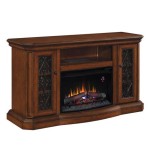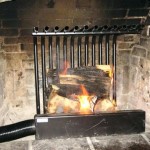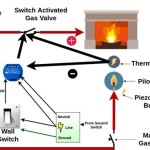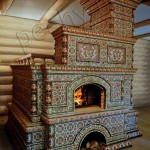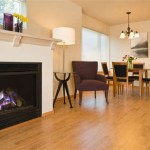Antique-Looking Gas Fireplace Inserts: A Blend of Tradition and Modern Convenience
Gas fireplace inserts have become increasingly popular for homeowners seeking the ambiance of a traditional fireplace with the efficiency and ease of use that modern technology offers. Among the various styles available, antique-looking gas fireplace inserts are particularly appealing, as they provide a classic aesthetic that complements a wide range of interior designs, from Victorian to rustic farmhouse.
These inserts are designed to fit into existing fireplace openings, transforming wood-burning fireplaces into convenient and controllable gas-fueled heating sources. The "antique-looking" designation refers to their visual design, which often incorporates features reminiscent of older fireplaces, such as intricate castings, simulated brick liners, andirons, and even decorative features that mimic the appearance of coal or wood fires.
The allure of antique-looking gas fireplace inserts lies in their ability to evoke a sense of history and tradition while providing the benefits of a modern heating appliance. Unlike their wood-burning counterparts, gas inserts offer precise temperature control, instant ignition, and reduced maintenance requirements. Moreover, they eliminate the need for wood storage, the mess associated with ashes, and the environmental concerns related to wood smoke.
Aesthetic Features and Design Elements
The distinguishing characteristic of antique-looking gas fireplace inserts is their focus on replicating the aesthetic of historical fireplaces. This is achieved through various design elements that contribute to their overall appearance. One common element is the use of detailed castings. These castings, typically made of cast iron or other durable materials, often feature ornate patterns, decorative motifs, and textured surfaces that mimic the look of antique fireplace surrounds and panels. The castings not only enhance the visual appeal but also add to the insert's perceived weight and solidity, reinforcing the impression of a substantial, historically accurate piece.
Simulated brick liners are another key element in replicating the look of a traditional fireplace. These liners, made of refractory materials, are designed to resemble the appearance of real bricks, complete with variations in color and texture. They provide a backdrop for the flames and embers, creating a more realistic and visually appealing fire experience. Some inserts even feature hand-painted brick patterns to further enhance their authenticity.
Andirons, traditionally used to support burning logs, are often included as decorative elements in antique-looking gas fireplace inserts. These andirons, though not functional in the traditional sense, contribute to the overall historical aesthetic. They are typically made of cast iron or other metals and feature intricate designs that complement the insert's other decorative features. In addition to andirons, some inserts may include other decorative elements, such as faux logs, ember beds, or even simulated coal pieces, to further enhance the realism of the fire.
The flame presentation is also a crucial aspect of the aesthetic design. Manufacturers often employ techniques to create realistic-looking flames that flicker and dance in a way that mimics a natural wood fire. This can involve the use of specially designed burners, strategically placed logs, and adjustable flame heights to achieve the desired effect. The goal is to create a fire that is both visually appealing and comforting, evoking the warmth and charm of a traditional fireplace.
Functional Benefits and Technological Advancements
Beyond their aesthetic appeal, antique-looking gas fireplace inserts offer a range of functional benefits that contribute to their popularity. One of the most significant advantages is their heating efficiency. Modern gas inserts are designed to efficiently convert gas into heat, providing a substantial improvement over traditional wood-burning fireplaces, which can lose a significant portion of their heat up the chimney. This increased efficiency translates into lower heating costs and a more comfortable living environment.
Furthermore, gas inserts offer precise temperature control. Most models come equipped with thermostats that allow users to set and maintain a desired room temperature. This level of control is simply not possible with wood-burning fireplaces, which require constant monitoring and adjustment. The ability to easily adjust the temperature makes gas inserts a convenient and practical heating solution for homeowners.
Another key benefit is the ease of use and maintenance. Gas inserts eliminate the need for wood storage, chopping, and hauling. They also eliminate the mess associated with ashes and the need for regular chimney cleaning. Starting and stopping the fire is as simple as flipping a switch or pressing a button on a remote control. This convenience makes gas inserts an attractive option for those who want the ambiance of a fireplace without the hassle of wood-burning.
Modern gas fireplace inserts also incorporate various safety features. Many models include safety shut-off valves that automatically turn off the gas supply if the flame is extinguished. This prevents the buildup of gas and reduces the risk of explosions. Some inserts also feature childproof controls to prevent unauthorized use. These safety features provide peace of mind for homeowners and ensure the safe operation of the appliance.
Technological advancements have further enhanced the functionality of gas fireplace inserts. Some models are now equipped with smart home integration, allowing users to control the fireplace remotely via their smartphones or other devices. This includes the ability to turn the fireplace on and off, adjust the temperature, and even set schedules. These smart features add another layer of convenience and control, making gas inserts an even more appealing heating option.
Installation Considerations and Safety Standards
Proper installation is crucial for the safe and efficient operation of any gas fireplace insert, including antique-looking models. It is highly recommended that installation be performed by a qualified and licensed professional who is familiar with local building codes and safety regulations. Improper installation can lead to gas leaks, carbon monoxide poisoning, or other hazards.
Before installation, it is essential to inspect the existing fireplace and chimney to ensure that they are in good condition and suitable for use with a gas insert. The chimney must be properly lined to prevent the escape of combustion gases and to protect the surrounding structure from heat damage. In some cases, it may be necessary to repair or replace the chimney liner before installing the insert.
During installation, the gas insert must be properly connected to the gas supply line. The connections must be leak-tested to ensure that there are no gas leaks. The insert must also be properly vented to the outside to allow for the safe removal of combustion gases. Venting requirements vary depending on the type of insert and local building codes, so it is essential to follow the manufacturer's instructions and consult with a qualified installer.
Once the installation is complete, it is important to have the insert inspected by a qualified professional to ensure that it is operating safely and efficiently. Regular maintenance, such as cleaning the burner and venting system, is also necessary to ensure continued safe and efficient operation. Homeowners should follow the manufacturer's recommendations for maintenance and schedule regular inspections by a qualified professional.
Gas fireplace inserts must meet stringent safety standards to be sold and installed. These standards, developed by organizations such as the American National Standards Institute (ANSI) and the Canadian Standards Association (CSA), cover various aspects of the insert's design, construction, and performance. Certification by these organizations ensures that the insert has been tested and meets minimum safety requirements. When selecting a gas fireplace insert, it is important to look for models that are certified by ANSI or CSA.
In addition to safety standards, there are also regulations governing the installation and use of gas fireplace inserts. These regulations, which vary depending on the location, may address issues such as venting requirements, gas line connections, and fire safety precautions. Homeowners should be aware of these regulations and ensure that their gas fireplace insert is installed and operated in compliance with them.

Belmont Small Gas Insert

Windsor Small Victorian Style Gas Insert

Gas Inserts Victorian Fireplace

Enviro S Gas Q1 Insert

Pin By Charlotte Crabtree On Newton Home Fireplace Victorian Gas

Nordik 34i Kozy Heat Fireplaces

Victorian Gas Insert Vintage Fireplace Dimensions

Gas Fireplace Insert 9 For On 1stdibs Victorian Vintage Style Inserts

Gas Fire Antique Fireplace Co

Our Guide To The Perfect Period Fireplace Direct Fireplaces
Related Posts

